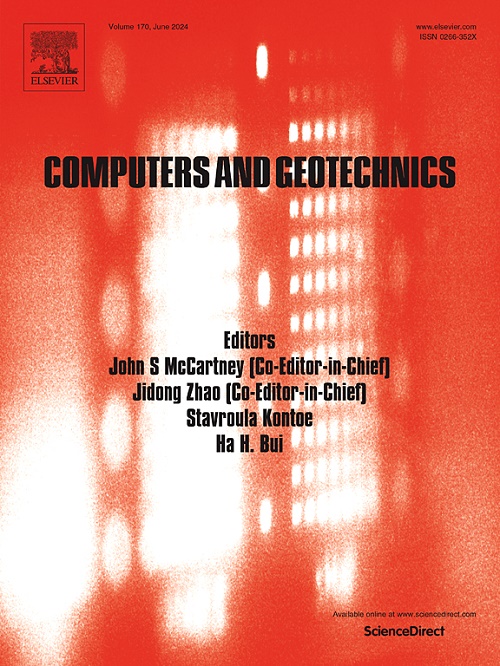A novel fluid-solid coupling method for fractured reservoirs: 3D DDM-EDFM integration with proppant mechanics
IF 5.3
1区 工程技术
Q1 COMPUTER SCIENCE, INTERDISCIPLINARY APPLICATIONS
引用次数: 0
Abstract
This paper proposes a novel numerical simulation approach for fluid–solid coupling in fractured reservoirs, incorporating the mechanical properties of proppants into the coupling framework. By integrating the Displacement Discontinuity Method (DDM) with a three-dimensional Embedded Discrete Fracture Model (3D EDFM), the proposed method enables coupled simulations of geomechanics and fluid flow. Unlike conventional approaches, this method considers the time-dependent evolution of fracture aperture and accurately captures the mechanical effects of proppants during fracture closure. A comprehensive analysis is conducted to investigate the impacts on fracture dynamics and fluid flow behavior. The model’s reliability is validated through comparisons with analytical solutions and the Extended Finite Element Method (XFEM). Results demonstrate that the time-dependent evolution of fracture apertures significantly influences fluid flow in fractured reservoirs. Specifically, during the production stage, fracture closure results in a sharp decline in oil production rates. Larger proppant-supported apertures effectively mitigate fracture closure, sustain high fracture conductivity, and prolong the production period. Additionally, low-porosity reservoirs are shown to be more sensitive to rock deformation, leading to substantial changes in flow parameters during production. Thus, incorporating fluid–solid coupling is crucial for accurate modeling in low-porosity reservoirs. This study provides valuable theoretical insights for the development of unconventional resources.
求助全文
约1分钟内获得全文
求助全文
来源期刊

Computers and Geotechnics
地学-地球科学综合
CiteScore
9.10
自引率
15.10%
发文量
438
审稿时长
45 days
期刊介绍:
The use of computers is firmly established in geotechnical engineering and continues to grow rapidly in both engineering practice and academe. The development of advanced numerical techniques and constitutive modeling, in conjunction with rapid developments in computer hardware, enables problems to be tackled that were unthinkable even a few years ago. Computers and Geotechnics provides an up-to-date reference for engineers and researchers engaged in computer aided analysis and research in geotechnical engineering. The journal is intended for an expeditious dissemination of advanced computer applications across a broad range of geotechnical topics. Contributions on advances in numerical algorithms, computer implementation of new constitutive models and probabilistic methods are especially encouraged.
 求助内容:
求助内容: 应助结果提醒方式:
应助结果提醒方式:


